Correctional Facilities provides a variety of facilities and programs that include a level of institutional or restricted living. These include:
- Secure Care. Provide long-term services for serious and repeat offenders including quality treatment, education, vocation, psycho-education services as well as medical care. All services are conducted within secure facilities under the supervision of DJJS staff.
- Detention Facilities. Provide temporary care for youth under age 18 who are awaiting court proceedings, placement, or are serving a sentence ordered by the Juvenile Court. A judge can commit youth to detention services for a maximum of 30 days. While in detention, youth are provided with health care as well as education and recreation programming.
During the 2015 General Session, the Legislature appropriated for Fiscal Year 2016, $28,292,700 from all sources for Correctional Facilities. This is a 2 percent increase from Fiscal Year 2015 revised estimated amounts from all sources. The total includes $27,225,000 from the General/Education Funds, an increase of 2.1 percent from revised Fiscal Year 2015 estimates.
In addition to statewide compensation and internal service fund cost increases, the following appropriation adjustments were made during the 2015 General Session:
During the 2013 General Session, the Legislature appropriated $1.2 million in nonlapsing balances from the Department of Corrections to DJJS. This $1.2 million is reflected as a General Fund one-time appropriation for FY 2014 in the table below and its purpose is to fund the Weber Valley Detention Center for one year.
Percent of clients with contempt, warrants, or administrative holds
Detention
- Admissions Percent - Clients With Contempt, Warrants or Administrative Holds. The percentage mix of these three categories of admissions helps identify what types of clients are coming into detention facilities and the resources needed to address the needs of those youth.
Those admissions for contempt, warrants, or administrative holds are an indication of longer stays up to 30 days, with more long term resources needed to address those client needs in the detention facilities.
FY 2013 Results:
Total Admissions: 8,484 Different Youth Served: 4,275 Males Admitted: 6,531 Females Admitted: 1,953 Average Length of Stay: 8.7 Days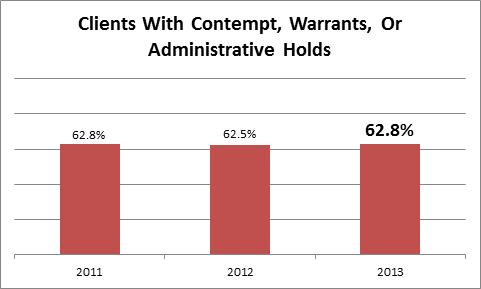
- Admissions Percent - Clients with New Charges. Clients with new charges, depending on the charges, could indicate longer detention stays with additional resources required.
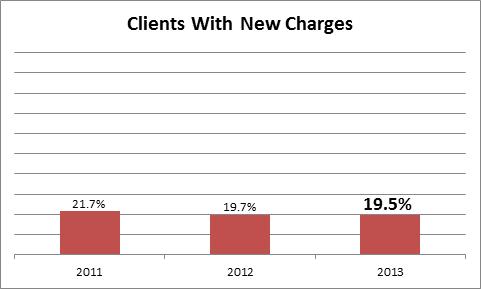
- Admissions Percent - Clients Waiting Placement. Clients awaiting placement have generally a short length of stay (just a few days).
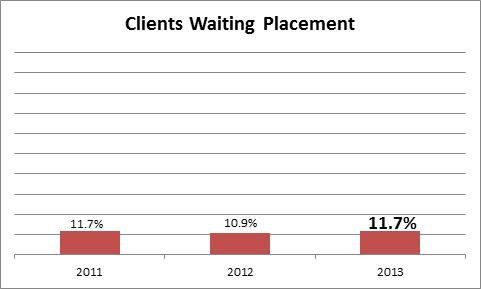
Percent of youth without a new felony charge within 360 days of release
Secure Care
- Percent of Youth without a New Felony Charge within 360 Days of Release. This measure identifies youth recidivism after program completion. This measures the program's ability to suppress youths' further penetration into the juvenile justice system and to keep the community safe from more serious offenses.
FY 2013 Results:
Total Admissions: 201 Different Youth Served: 321 Males Admitted: 180 Females Admitted: 21 Average Length of Stay: 295.4 Days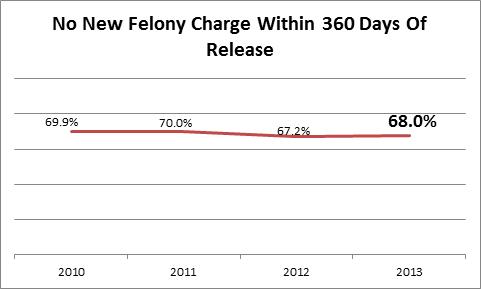
- Percent of Youth without a New Felony or Misdemeanor Charge within 360 Days of Release. This measure identifies youth recidivism after program completion. This measures the program's ability to suppress youths' further penetration into the juvenile justice system and to keep the community safe from any type of offense.
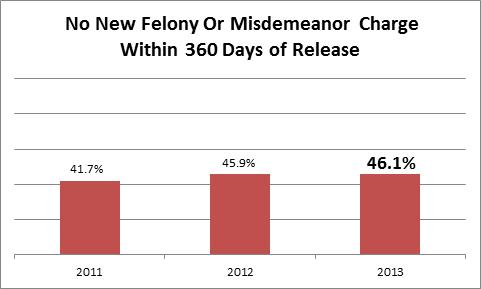
- In-Program Protection--Percent of Youth Felony Free While in the Program. This measures the program's effectiveness at keeping the youth crime free during their stay in the program.

- In-Program Protection--Percent of Youth Felony and Misdemeanor Free While in the Program. This measures the program's effectiveness at keeping the youth crime free during their stay in the program.
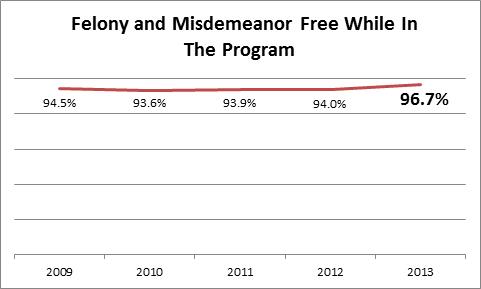
The general principles and authority for this program are scattered throughout UCA 62A-7. Specific sections are noted below:
UCA 62A-7-101 defines the terms of correctional facilities;
UCA 62A-7-104 directs the division to operate and maintain secure facilities and programs; and
UCA 62A-7-201 through 203 and 401.5 specifically address the issues of confinement, secure facilities, detention facilities, and restrictions.
COBI contains unaudited data as presented to the Legislature by state agencies at the time of publication. For audited financial data see the State of Utah's Comprehensive Annual Financial Reports.